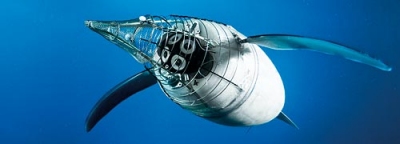 The world we share with other species of nature - all co-existing on the one plant and sharing the same biosphere - has many life skills to share with us - if we can only see and understand. Tom McKeag who teaches bio-inspired design at the California College of the Arts and University of California, Berkeley has nominated his 2009 Tommy Awards.
The world we share with other species of nature - all co-existing on the one plant and sharing the same biosphere - has many life skills to share with us - if we can only see and understand. Tom McKeag who teaches bio-inspired design at the California College of the Arts and University of California, Berkeley has nominated his 2009 Tommy Awards.
He has also decided to give the awards to the creatures that inspired the innovation, rather than the human inventors. This is an amazing new non-destructive application of technology and a whole new world for design.
The penguin, in the strictest biomechanical sense, doesn't really swim underwater, but rather flies. That is, the creature gets both lift and thrust from the action of its flapping, planar wings. It has inspired the latest development in robots highlighted by the German engineering firm Festo AG at the Hanover Messe Trade Exhibition in April.
The Aquapenguin mimics the hydrodynamic body features of the bird and is made with soft material and glass fibre rods, a motor and 3D sonar device by Evologics of Berlin. These allow the bot to swim with great flexibility and avoid collisions with obstacles or other swimmers, important in situations demanding a high degree of flexibility and autonomy. Festo has already developed a commercial product, an industrial arm with a gripper end, based on this technology.
The manta ray also flies underwater and inspired another Festo product that took to the skies. The Air_ray is a remote-controlled helium-filled ballonet made of aluminum vaporized PET foil and shaped like the ray. It contains a small servo that beats its 6-foot wings with a clever linkage mechanism modeled after the tail fins of many fish. Two alternating pressure and tension flanks are connected by ribs. When one flank is pressured, the structure bends from its geometry in the direction opposed to the force. While super light (the buoyancy of the helium can only support 1.6 kg of weight), the Air_ray can perform some simple maneuvers including loop-de-loops and flying backwards. The slow moving Air_ray can also carry a camera.
More to come.
 The world we share with other species of nature - all co-existing on the one plant and sharing the same biosphere - has many life skills to share with us - if we can only see and understand. Tom McKeag who teaches bio-inspired design at the California College of the Arts and University of California, Berkeley has nominated his 2009 Tommy Awards.
The world we share with other species of nature - all co-existing on the one plant and sharing the same biosphere - has many life skills to share with us - if we can only see and understand. Tom McKeag who teaches bio-inspired design at the California College of the Arts and University of California, Berkeley has nominated his 2009 Tommy Awards.